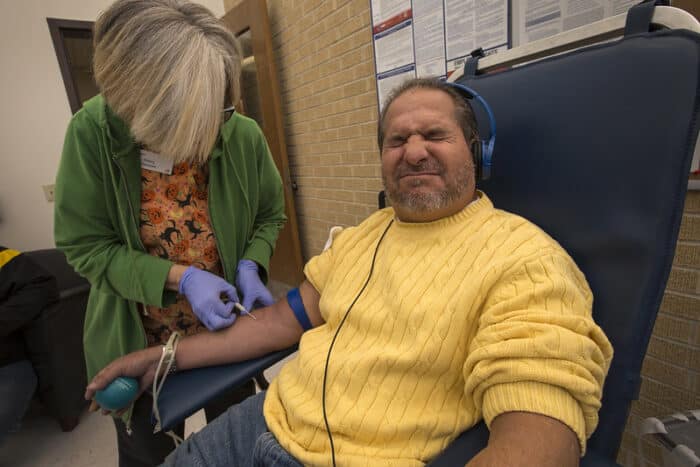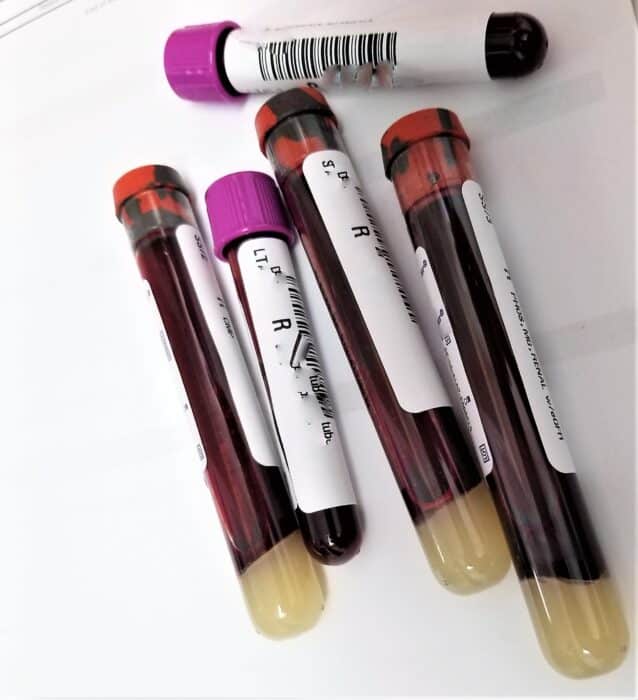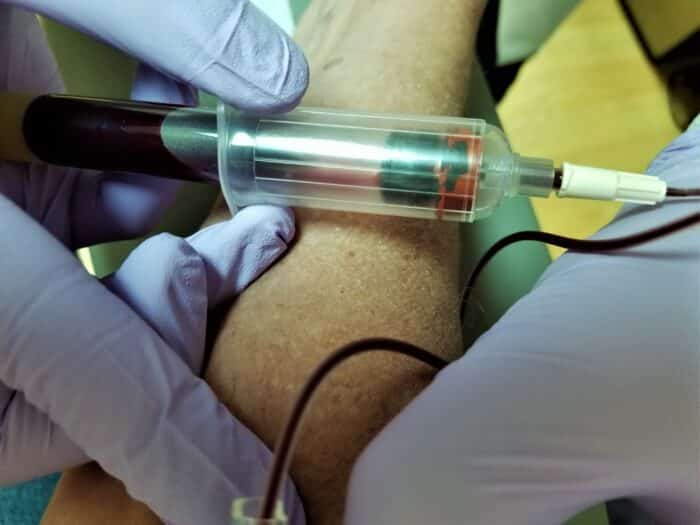If you’re an aspiring phlebotomist, you might have wondered about how you can land the job of your dreams in this career.
Let us help you with that.
In this article, we will uncover more about a little document that can make a big difference in your job search journey – the Phlebotomist Cover Letter.
If you’re thinking, ‘Oh, it’s just another piece of paper,’ think again!
A cover letter is your chance to introduce yourself, showcase your skills, and convince potential employers that you’re the phlebotomist they’ve been searching for.
So, grab your pens (or keyboards) because we’re about to dive into the art of crafting a standout cover letter that’ll have employers lining up to hire you.
Phlebotomy Cover Letter Examples
If you’re new to this, you must be confused about what a cover letter is, and how it’s different from the regular resume.
A cover letter is a letter you send along with your job application, typically your resume, to introduce yourself to a potential employer. It’s a chance to explain why you’re a great fit for the job and why they should consider you.
In a cover letter, you can highlight your skills, qualifications, and enthusiasm for the position. It’s also an opportunity to show your personality and explain how your experience matches the requirements of the job. A well-written cover letter can make a strong first impression and increase your chances of getting an interview.
Now, let’s dive into a few examples so you can figure out what exactly a cover letter looks like.
Read: How Long Does it Take to Become a Phlebotomist
Example Cover Letter for a Fresher Phlebotomist
[Your Name]
[Your Address]
[City, State, ZIP Code]
[Your Email Address]
[Your Phone Number]
[Date]
[Employer’s Name]
[Hospital or Clinic Name]
[Address]
[City, State, ZIP Code]
Dear [Employer’s Name],
I am writing to express my strong interest in the Phlebotomist position at [Hospital or Clinic Name], as advertised on [where you found the job listing]. As a recent graduate of [Name of Phlebotomy Training Program], I am excited to begin my career as a certified Phlebotomist and contribute to the exceptional healthcare services provided by your esteemed institution.
During my comprehensive phlebotomy training, I acquired a solid foundation in venipuncture and capillary blood collection techniques. My coursework included infection control, patient communication, and laboratory procedures, all of which have prepared me to excel in a clinical setting. I am proud to have successfully obtained my Phlebotomy Technician Certification from [Certifying Body], further confirming my dedication to maintaining high standards of patient care and safety.
I am particularly drawn to [Hospital or Clinic Name] because of its reputation for excellence in patient care and its commitment to professional development. I am eager to join a team of healthcare professionals who share my passion for providing top-notch services to patients.
My skills include:
– Proficiency in venipuncture, capillary puncture, and blood collection procedures.
– Strict adherence to infection control protocols and safety guidelines.
– Exceptional communication skills to put patients at ease during the phlebotomy process.
– Attention to detail in labeling and handling blood samples to ensure accuracy.
– Strong organizational skills to maintain orderly and efficient workspaces.
I am enthusiastic about the opportunity to contribute to [Hospital or Clinic Name]’s mission of delivering outstanding healthcare services and look forward to the chance to discuss how my skills and dedication align with your team’s goals.
Enclosed is my resume, which provides further details about my education and qualifications. I would welcome the opportunity for an interview to discuss how my skills and passion for patient care can benefit [Hospital or Clinic Name]. You can reach me at [Your Phone Number] or [Your Email Address].
Thank you for considering my application. I am excited about the possibility of joining your team and contributing to the exceptional healthcare services you provide.
Sincerely,
[Your Name]
An important thing to note here is that you need to make sure to customize this cover letter with your specific details, including the employer’s name, hospital or clinic name, and any additional skills or qualifications you possess.
Read: Phlebotomist Skills
How to Write a Cover Letter for a Phlebotomist
Writing a cover letter for a phlebotomist job is important to introduce yourself and highlight your qualifications. You might be wondering how to write the perfect cover letter for yourself.
Here’s a simple and easy-to-read guide on how to do it:
Contact Information:
Include your name, address, phone number, and email at the top of the page.
Salutation:
Start with a proper greeting, such as “Dear Hiring Manager,” or if you know the hiring manager’s name, use it.
Introduction:
Begin by stating your interest in the phlebotomist position. Also mention how you learned about the job, whether through a job listing or a referral.
Body Paragraphs:
In the first paragraph, briefly describe your relevant experience and skills. You also need to highlight any certifications or training you have, like a phlebotomy certification. Also, mention any previous phlebotomy jobs or related healthcare experience.
Second Paragraph:
Explain why you are interested in this specific job and company. You can also mention what you admire about the company or its values. Show that you’ve done some research.
Third Paragraph:
Showcase your soft skills, like communication, attention to detail, and empathy. Discuss your ability to work well with patients and healthcare professionals.
Closing Paragraph:
Express your eagerness to discuss your qualifications in an interview. Thank the employer for considering your application.
Closing Salutation:
End with a polite closing like “Sincerely” or “Best regards.”
Signature:
Sign your name if you’re submitting a physical copy. For digital applications, simply type your full name.
Proofread:
Check for any errors in spelling, grammar, or punctuation. Ensure the formatting is consistent and easy to read.
Remember to keep your cover letter concise, ideally within one page, and customize it for each job application to emphasize how you meet the specific requirements of the phlebotomist position.

Do You Want To Become a Phlebotomist? Check Out Free Phlebotomist Masterclass!
In our masterclass you learn:
- How to be a Phlebotomist faster…in just 2 months!
- Avoid student debt & driving to classes
- #1 thing employers want from Phlebotomists
- How to stand-apart & get a university certificate for a strong resume
How to Write a Cover Letter for a Phlebotomist Position with No Experience?
We know that thinking about writing a cover letter for a phlebotomist position with no experience can be a bit challenging, but it’s not impossible.
Your main aim is to highlight your relevant skills, express your enthusiasm for the position, and demonstrate your willingness to learn and grow in the role.
Here are some tips to help you craft an effective cover letter:
Start with a strong opening:
Begin your cover letter with an impressive and specific introduction. Mention the position you’re applying for and where you found the job posting. This shows that you’ve done your research.
Express your enthusiasm:
Convey your genuine interest in the phlebotomist role and the healthcare field. Share why you’re passionate about this career path and how it aligns with your long-term goals.
Highlight transferable skills:
While you may not have phlebotomy experience, you can highlight any transferable skills you possess that are relevant to the job. These might include attention to detail, organizational skills, communication skills, and the ability to work well under pressure.
Showcase your education:
If you’ve completed any relevant coursework, certifications, or training programs, mention them in your cover letter.
Mention volunteer or internship experiences:
If you’ve volunteered or interned in any healthcare setting, even if not as a phlebotomist, highlight these experiences. Describe any tasks or responsibilities that involved patient interaction, medical procedures, or healthcare protocols.
Address your lack of experience:
Acknowledge in a positive manner that you don’t have direct phlebotomy experience. However, emphasize your enthusiasm to learn and your commitment to becoming a skilled and competent phlebotomist.
Emphasize your soft skills:
Phlebotomists need strong interpersonal skills, patience, and the ability to make patients feel comfortable. Highlight any experiences or qualities that demonstrate these soft skills.
Read: How to Become a Phlebotomist
What is a Letter of Interest for a Phlebotomist?
A letter of interest for a phlebotomist position is a brief document that expresses your desire to work for a specific healthcare facility even when there are no job openings advertised.
You might be wondering what the structure of a letter of interest looks like. Let us help you with that.
In the first paragraph, introduce yourself and mention your interest in the phlebotomist role at the facility. Explain why you’re drawn to this organization, highlighting its reputation, values, or commitment to patient care. Mention any skills, certifications, or relevant experience you possess.
In the second paragraph, express your enthusiasm for the opportunity to contribute to the facility’s mission and explain how your skills and dedication align with their needs. Request the chance to discuss potential job openings or internships, and provide your contact information.
Also see: Ultimate Phlebotomist Resume Guide – Phlebotomy Job
Conclusion
When you’re applying for a phlebotomist job, your cover letter is super important. It’s like your first impression of the people who might hire you.
So, make sure it’s really good. Just remember to keep it short, and organized, and make it fit the specific job you’re applying for. With a great cover letter, you’ll be on your way to a cool phlebotomy career.
Related Resources:
- Phlebotomist Duties
- Which Two Skills are Important for a Phlebotomist?
- What Do You Need To Be a Phlebotomist?
- Pros and Cons of Being a Phlebotomist
- How To Get a Phlebotomy Certification
- What are the Different Types of Phlebotomy Certifications?
- Top Places That Hire Phlebotomy Techs
- Phlebotomist Nurse
- Phlebotomist Lab Technician
- Therapeutic Phlebotomy
- Phlebotomist Education
- Cardio-Phlebotomy Technician
- Online Phlebotomy Classes
- Order of Draw Phlebotomy
- Phlebotomy Internship
- 4-Week Phlebotomy Classes Online
Related Articles
-
How to Be Successful in College in 2022 – 7 Simple Tips to Succeed
-
How Do Scholarships Work? Read This First…Truth is Shocking
-
7 Best College Majors 2024: What Should I Major In?
-
How to Choose a College – 10 Things You Must Consider in 2024
-
Why Go to College? Top 13 Benefits for Adult Students in 2022
-
Top 5 Best Alternatives to Community College for 2024









